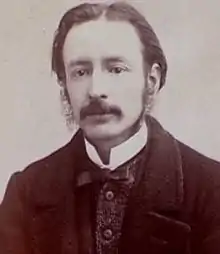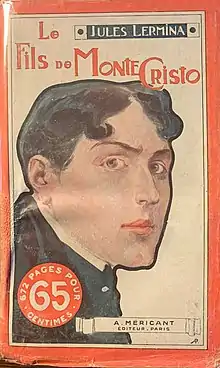Jules Lermina
Jules Lermina (1839–1915) was a French writer. He began his career as a journalist in 1859. He was arrested for his socialist political opinions, and received Victor Hugo's support.


He published a number of Edgar Allan Poe-inspired collections, Histoires Incroyables [Incredible Tales] (1885), Nouvelles Histoires Incroyables [New Incredible Tales] (1888) and a short novel, L'Élixir de Vie [The Elixir of Life] (1890) (translated by Brian Stableford and included in Panic in Paris). Le Secret des Zippelius [The Secret of the Zippelius] (1893) (translated by Brian Stableford as The Secret of Zippelius (2011) ISBN 978-1-935558-88-0) featured the controlled disintegration of water. His two-volume La Bataille de Strasbourg [The Battle of Strasbourg] (1895) was one of the first novels on the theme of the yellow peril.
In L'Effrayante Aventure [Panic in Paris] (1910) (translated by Brian Stableford, ISBN 978-1-934543-83-2), Lermina used Bulwer-Lytton's vril-force to create a vril-powered flying machine. The novel also features the resurrection of prehistoric creatures frozen in ice in caverns under Paris. Mystère-Ville (1905) (translated by Brian Stableford as Mysteryville, ISBN 978-1-935558-27-9), written under the pseudonym of William Cobb, and illustrated by Albert Robida, was about Protestants who had fled France and created a secret, futuristic city in a hidden Chinese valley.
Lermina also penned a proto-Tarzan novel, To-Ho le Tueur d'Or (1905) (translated by Georges T. Dodds as To-Ho and the Gold Destroyers ISBN 978-1-935558-34-7, two sequels to the popular classic The Count of Monte-Cristo: Le Fils de Monte-Cristo (1881) (that in English was divided in two books: The Wife of Monte Cristo and The Son of Monte Cristo), and Le Trésor de Monte-Cristo [The Treasure of Monte-Cristo] (1885); and Les Mystères de New York [The Mysteries of New York] (1874), also written under the pseudonym of William Cobb. He also created the indomitable Toto Fouinard, whose adventures were serialized in 1908–09.
